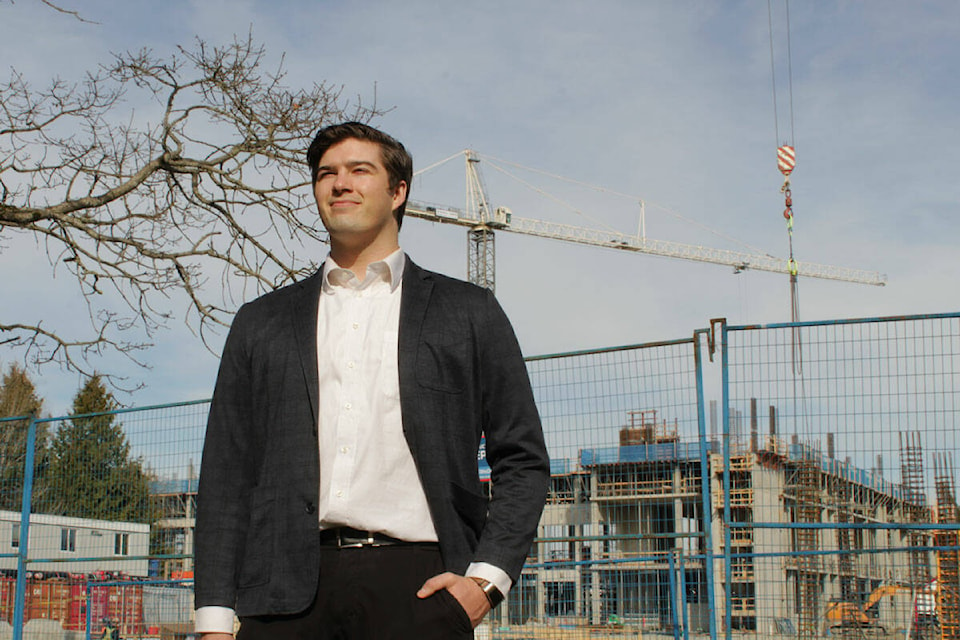A pair of Saanich councillors are teaming up to try to change development rules in the district to create a first-of-its-kind parking maximum for large buildings, while also reducing minimums on smaller units.
This, councillors Zac de Vries and Teale Phelps Bondaroff say, would pave the way for new housing by reducing red tape and constant exemption requests to current rules, while also being a step toward easing the housing crisis and reducing environmental impacts.
“We’re in a housing crisis, not a parking crisis,” de Vries said in telephone interview on Friday (March 15).
Parking minimums are a part of zoning regulations that exist in many municipalities requiring a certain number of parking spaces to be built per dwelling, generally with different rules for single-family homes, garden suites and apartments.
Currently, in Saanich, single-family and attached homes are required to have two stalls, while apartment buildings are required to have 1.5 parking spaces per unit.
Many housing affordability advocates have criticized parking minimums, and a number of larger cities in both Canada and the U.S. have done away with them in an effort to boost housing stock.
The two councillors plan to bring the changes forward in a motion during a Monday (March 18) committee meeting of council.
Their proposal comes in two parts. First, the councillors want to reduce all parking requirements for any type of residential building with under 12 units to one stall per unit.
Next, the more radical part, they want to take that minimum requirement of 1.5 parking spots in buildings with more than 12 units, and make that the maximum number of spaces allowed.
De Vries said this parking maximum would be a new approach that would be at the forefront of these types of rule changes.
“I believe we’d be the first jurisdiction in North America to be bringing that in,” he said.
Instead of the minimums, planning for those larger structures would need to go through a required transportation study to evaluate the impact of the development on traffic, at which point a minimum number of parking spaces could be set for the project.
In Saanich, de Vries said it is easy enough for a single-family home to meet the requirement to put in two parking spaces per unit, but the 1.5 parking space per unit requirement for apartment buildings is nearly impossible for building with over 12 units.
This has meant that many, if not all of the developers of these larger buildings end up in front of councillors seeking zoning bylaw variances to allow them to proceed without following the parking minimums.
If the minimums were actually to be followed in most of those cases, Phelps Bondaroff said in a press release that it would lead to lost green space and environmental impacts from increased car use.
“In many cases, the parking spaces required by regulations are not fully utilized, leading to wasted space and resources,” Phelps Bondaroff said.
With developers not wanting to abide by the minimums because they increase costs, affordable housing advocates not wanting them because they decrease housing stock, and environmental advocates not liking them because they reduce green space and encourage driving, de Vries and Bondaroff see their position on this as a winnable in council.
“I think that council will support it because I think we’re all interested in ensuring that we’re promoting more affordable housing, we’re wanting to make sure that the building of housing that we desperately need is financially viable,” de Vries said. “And then also, we want to make sure that we’re embracing and supporting more sustainable forms of transportation.”
READ MORE: Saanich OCP headed for public hearing, lines being drawn over tall buildings
